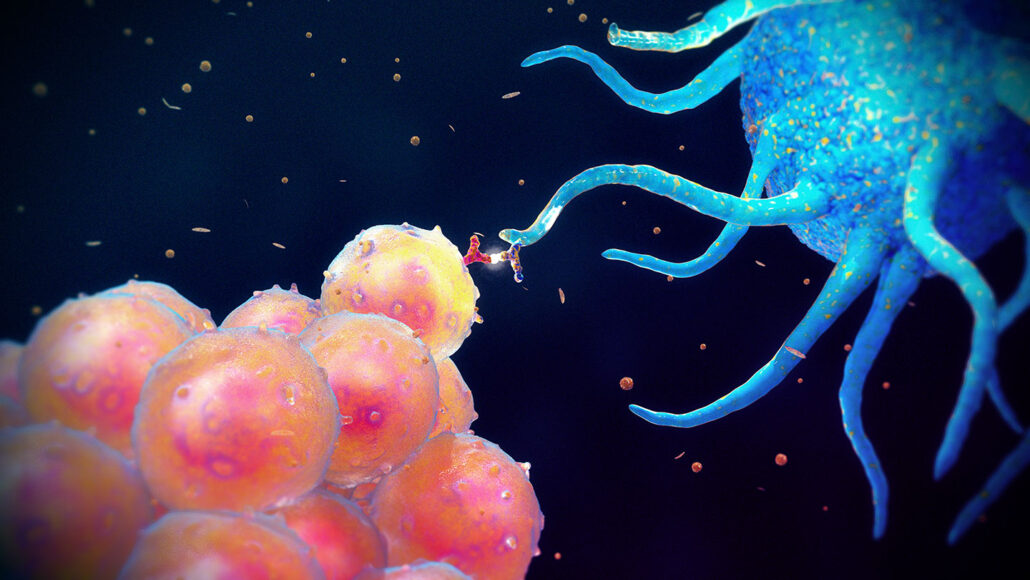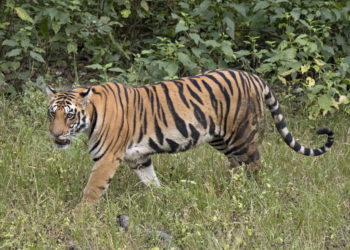Your immune system is probably something you ignore, at least until you get ill. Then you realize how important the immune system is.
It’s all the various organs, cells and proteins spread throughout the body that protect us from bacteria, viruses and other potentially harmful invaders.
Cells of the immune system can be split into two closely related military squads: innate and adaptive.
Troops belonging to the first — innate — patrol the body to detect intruders, such as bacteria and viruses. These troops don’t trust anyone, not even their own body’s cells. But they don’t have to fend off bad guys alone.
When faced by a tough adversary, they can call in back-ups — the adaptive troops — that are skilled in even heavy combat.
Naama Geva-Zatorsky works at the Rappaport Technion Integrated Cancer Center in Haifa, Israel.
There, she studies microbes and the immune system. The mission of the body’s innate immune system, she explains, is to distinguish between friendly cells (the body’s own cells) and intruders (non-self).
They preserve a memory of the former invasion. Based on that living memory, they’ll be able to help the body react faster and better the next time the same type of invader arrives.
Friendlies have specific structures on their surface, like a flag, that the innate troops recognize.
They know to ignore these cells. Intruders lack those familiar surface “flags” found on the body’s healthy cells.
When innate troops detect “non-self” structures — such as a virus — they set off alarms. These call out other troops to help eliminate the intruders as quickly as possible.
The three most important types of innate troops are immune cells known as neutrophils (NEW-troh-fils), macrophages (MAK-roh-faeges) and dendritic cells.
Neutrophils survey their neighborhood by “tasting” microbes. When they find an intruder, these troops release small signalling molecules called cytokines (SY-toh-kynes).
Cytokines quickly recruit help to the developing fight. They tell other immune cells what type of help they need and where to send it.
Sometimes neutrophils also change shape. They sprout long arms and form a web-like net to trap invaders.
Macrophages are bigger, curly-shaped cells that respond to the neutrophil alarms.
They hang out in the tissues longer than the neutrophils do. While there, they gobble up as many invaders as possible through a process called phagocytosis (Fag-oh-sy-TOH-sis). Macrophages won’t stop eating until nothing is left.
Dendritic cells arrive around the same time as macrophages. Dendritic cells digest pieces of microbes and then show them out on their long arms.
In this way they recruit a back-up squad into the battle: the adaptive immune system.
The back-up forces
The heavy forces of the adaptive immune system don’t get involved with every little invader.
Most of the time, innate immune cells can win the battle by themselves. We don’t even notice it happening.
However, when worrisome pathogens invade our bodies, cells of the adaptive immune system take over.
They tailor their particular response to each invader but need a few days to make much headway.
Sometimes intruders sneak into the body and take over some healthy cell. That’s where it will multiply (or replicate). But once inside, that invader is also hidden. The innate cells can no longer find it.
Helper T cells, a type of white blood cell —or lymphocyte — now step in. They collect info on the enemy, regardless of whether those attackers are inside of a cell or out. Then they’ll pass this intel along to another team, the killer T cells.
Killer T cells are another type of lymphocyte. They can kill anything that looks suspicious.
B cells release weapons called antibodies that seek out the enemy. Antibodies, which are families of Y-shaped proteins, are sticky.
They glom onto everything that resembles the intruder. In many cases this will be the actual invader. Other times it might be pieces left behind when the intruders are killed.
They might even be invader look-alikes created by vaccines. These invader mimics will allow B cells to respond quicker if ever a real microbial invader comes along.
The antibodies tag their target cells so that other immune-system teams can later go in and take them out.
Antibodies will also stalk escaping enemies throughout the body. Those antibodies seek out surface patterns on cells or cell bits that identify specific intruders.
The immune system helps keep us safe. We can also exploit it against deadly diseases thanks to vaccines and immune-boosting drugs.
After a battle is over, invader-specific B cells remain behind. They form a pool of veterans.
They preserve a memory of the former invasion. Based on that living memory, they’ll be able to help the body react faster and better the next time the same type of invader arrives.
This process is called immunological memory and it’s the key to how vaccines work.
“When an invader comes in the body, it’s great to have an alert immune system,” says Naama.
“But it’s also important that it doesn’t overdo.” There are several ways to stop such an overblown response.
Regulatory T cells, for instance, tamp down the activity of other T cells, before they get out of control.
During a skirmish, T cells can get so keyed up that they risk getting out of control. That’s where T-reg squads come in.
They help calm down the T-cell combat troops so that the immune system can return to normal.
The immune system helps keep us safe. We can also exploit it against deadly diseases thanks to vaccines and immune-boosting drugs.
“The immune system is cool, but we need to keep it healthy,” says Naama. How? Look after yourself. A healthy body means a healthy immune system.
Anna Napolitano/www.sciencenewsforstudents.org/









Comment